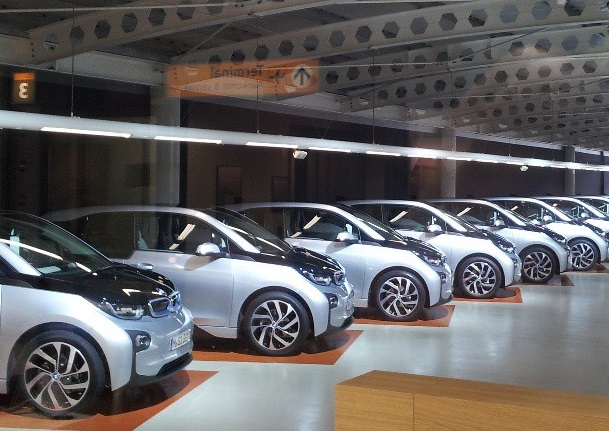Most of the world's truly significant cars have been striking, even polarizing, designs.
But some unusual, even polarizing, designs have been colossal failures.
And it remains unclear which category the 2014 BMW i3 will fall, in the different global markets in which BMW is selling it.
DON'T MISS: 2014 BMW i3: First Drive Of BMW's Radical New Electric Car
Now one of the most ardent advocates for BMW's electric-car efforts has written a piece in which he looks at the challenges facing the BMW i3.

2014 BMW i3 (German-market version), Amsterdam, Oct 2013
The blog post, Is the BMW i3 "Too European" for the U.S. Market?, is remarkably forthright in listing the concerns that may face the i3 as the car begins to show up in BMW showrooms across the U.S.
And a considerable amount of the concern centers on its unusual looks. As Moloughney notes in his opening:
It's been called edgy, futuristic, polarizing, ground breaking and even flat out hideous. It has funky lines, rear coach (suicide) doors that can't be opened unless the front doors are and rear windows that are permanently closed. The nose has a pronounced "underbite" that any respectful orthodontist would love to correct and the tires are so skinny they look like they should be on something coming out of BMW Motorrad [its motorcycle arm], and certainly not on a proper BMW automobile.

2014 BMW i3 (German-market version), Amsterdam, Oct 2013
The company's first battery-electric production car is the first high-volume vehicle with a body shell of carbon-fiber-reinforced plastic (CFRP), a strong but lightweight material that reduces the i3's weight substantially while giving it a structure so rigid that no center pillar is needed between the front and rear doors.
It's also the first electric car in the world to offer an optional range extender, or REx, in the form of a small two-cylinder gasoline engine that powers a generator to send electricity to the battery and drive motor for trips longer than the range of the battery.
Unlike the Chevrolet Volt or Fisker Karma, two range-extended electric cars whose engines were not optional, the added range from the REx is equal to or lower than the battery range--for regulatory reasons.
MORE: 2014 BMW i3 Range Extender: Heavier, Less Electric Range, Less Performance
And early reviews have noted that under certain circumstances, the range extender isn't powerful enough to keep the i3 running at highway speeds.
While the lightweight BMW i3 should make very efficient use of its battery energy, U.S. range ratings by the EPA still haven't been released. Most analysts expect the number to come in between 80 and 100 miles, roughly in the same region most battery-electrics on sale today except for the Tesla Model S luxury electric sedan.

2014 BMW i3, 2013 Frankfurt Auto Show
Part of the challenge lies in the very notion of a "city car," a term BMW officials both in Germany and North America have often used to describe the i3.
In Europe and Asia, which have clean, modern, efficient mass-transit networks (usually trains) and where fuel is far more expensive--twice the cost or more--than in the U.S., fewer people habitually drive distances of 100 miles or more on a regular basis.
Cars cover lower distances on average each day, and the car is not always the default choice for moving from one place to another.
So the idea of a "city car," a small, easy-to-park, highly efficient hatchback for short-distance use that's easy to park in crowded city centers or suburban developments without off-street parking, is accepted in Asia and Europe.
And as we learned on our test drive last fall, the BMW i3 may be the most soothing, calming, comfortable city car created to date by the auto companies of the world.
Whether that's desirable in the very different North American market--or something that most BMW dealers used to peddling "Ultimate Driving Machines" will have any interest in whatsoever--remains an open question.
_______________________________________________













